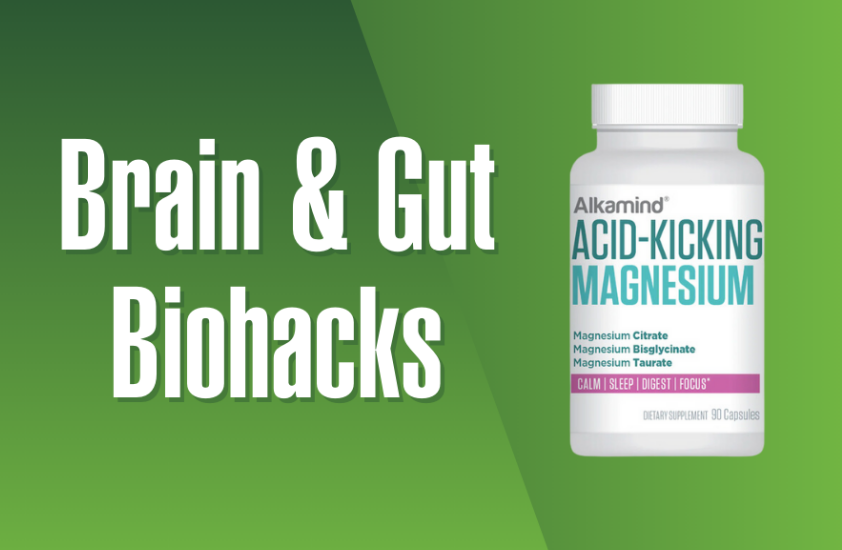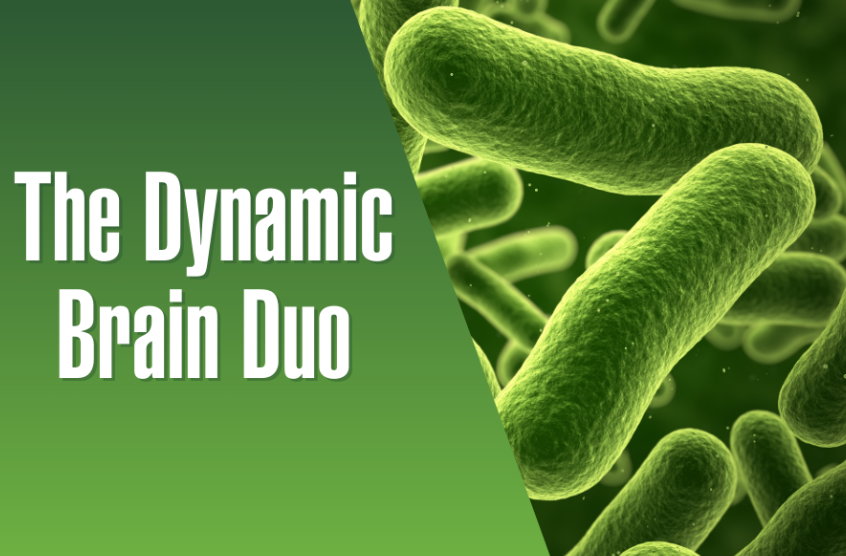 In the foreword to my book, Kelly Ripa wrote…
In the foreword to my book, Kelly Ripa wrote…
When Dr. Daryl recommended that we try his 7-Day Alkaline Cleanse, I wasn’t sure what to expect but agreed to do it… The one sacrifice I would not make, though, was giving up my morning coffee each day. He assured me that the program was so effective that even if I only followed 80% of guidelines, we would still see significant results.
Just like for Kelly, living the 80/20 principle is what makes the alkaline diet sustainable for so many people.
As I always say, it’s about moderation, not deprivation!
Today, I want to break down the macros, and what it means to live the 80/20 alkaline lifestyle in terms of what you actually put on your plate so you can be more informed about the choices you’re making and how to improve your health.
So let’s get started.
Why 80/20?
This isn’t just a ratio picked out of thin air. There is science behind it.
To help keep your body balanced at its ideal, slightly alkaline pH of 7.4, you have to eat about 4 times more alkalizing foods than acidifying ones. That ratio is going to your body its best chance to balance out all of the stress and environmental toxins you’re also encountering every day.
Did you know that your body is assaulted with 80,000 toxic chemicals every year, and did you also know that President Obama’s Cancer Panel in May, 2010 gave him a report, of which they stated the dangers of the environmental toxins we are exposed to, and do you know what was their #1 recommendation?
NEVER drink a glass of municipal water! Why is that? Because their findings concluded that a single glass of tap water has 6,000 carcinogens!
Last night I hosted a free webinar, all about your drinking water and hydration, and the power of Molecular Hydrogen. I had 2 health experts on with me, Trevor Long, the founder of the LIVE LONGER FEEL BETTER, and Dr. Paul Barattiero, the foremost authority on Molecular Hydrogen, and founder of Synergy Science Echo H2 Water, the water filters I use at home, and in my NYC Wellness Center.
We had 1,000 people on the Webinar, and gave out some awesome info for the first hour, and then Paul and I stayed on to answer EVERY question, and this was hands down the BEST part – we answered questions for 1 hour, you gotta check this out!
And Dr. Paul also made an incredible one-time offer to get his Hydrogen machines at a ridiculous price, and they sold out on the webinar last night!
Well, because of the overwhelming demand, I gave Dr. Paul a call this morning, and I convinced him to release another 25 Hydrogen Machines for another 48 hours – but at the end of the 48 hours, this special offer will go away for good, or when all 25 units are sold, which based on last night, they will most likely go quickly.
So if you have any interest in purchasing a Echo Hydrogen Filter at last night’s special webinar prices, and receiving the bonus offer of FREE SHIPPING WORDWIDE, and FREE DOMESTIC INSTALLLATION, click this link to watch the webinar replay and offer.
Back to 80/20. So, an easy way to think about this is making sure that your diet is 80% alkaline and no more than 20% acidic.
The good news about this way of eating is everything is on a spectrum. You don’t have to be 100% strict to improve your health. If you can’t quite get to an 80/20 split between recommended and less-optimal foods at first, that’s okay.

When I first heard about the alkaline diet, my diet was the opposite: 20/80 in favor of foods loaded with sugar and grains (read: sugar).
The key is to make alkaline living a priority. Set goals to steadily increase alkaline food consumption. First, get to 50/50, then 60/40, and then 70/30, etc (alkaline/acid, respectively).
If you are an overachiever, go for 90/10. In any case, you’ll be following a ratio superior to most people, thus moving your body to a healthier state.
80% of Your Plate
Overall, you’re aiming to eat 7 to 10 total daily servings of vegetables and low-sugar fruits, so that includes:
- Dark, leafy green vegetables like spinach, kale, watercress, romaine
- Sprouts
- Low- and non-starchy vegetables like carrots and asparagus
- Cruciferous vegetables like broccoli and Brussels sprouts
- Sulfur-based vegetables like onions, cabbage, leeks, garlic, etc.
- Avocados
- Low-sugar squashes like zucchini
- Low-sugar fruits like lemons, limes, grapefruit, coconut, pomegranate, watermelon.

That averages out to 3 servings of those foods per meal.
If you take only one thing away from this article, make it this… Add more greens to your daily diet. Greens are packed densely with essential nutrients and are highly alkalizing. In fact, if you look at many popular diets, as conflicting as they may all seem, the one constant is they all advocate eating more greens.
This is why starting your day with green smoothies with a big handful of kale or spinach, as well as drinking green juice, is something I recommend so often. If you want to make an easy dent in the number of greens servings you need to eat each day, drink it instead.
Did you know that you can drink 5 whole servings of raw, green superfoods in less than 30 seconds when you take Alkamind Daily Greens?
So greens are going to take up a large portion of your plate at each meal. They can be raw, or flash steamed or sautéed.
Moving on, with each meal, include 2 to 3 servings (1 tbsp. each if an oil) of healthy fats, ideally in the form of avocado, raw nuts, seeds, and oils:
- Extra virgin olive oil
- Macadamia nut oil
- Avocado oil
- Black cumin oil
- Coconut oil
- MCT oil
This adds up to 7 to 10 total daily servings of healthy oils and fats spread over all of your meals.
Extra Fat Hint: I normally eat 3 meals/day, or 2 when I am Intermittent Fasting, so I ALWAYS consume 1 tbsp. of coconut oil at each meal, and 1 right before I go to sleep.

If you eat 3 meals in a day, these 2 collective groups should comprise 80% of your plate. While the vegetables will take up the most physical space, the healthy fats will comprise 50-75% of the total calories on your plate.
Fats are much higher in calories than vegetables, so the amount of space a fat serving takes up on a plate is quite small. Vegetables should be the largest portion, visually.
Keeping it real sample – load up a HUGE green leafy salad, with rainbow colors like red bell peppers, cucumber slices, celery, jalapeno, sprouts, etc. Add some oils to it, like EVOO and Avocado. Them have some sautéed vegetables next to that, like spinach or broccoli with oil and garlic, and ½ an avocado. Then, I may add a small piece of wild-caught salmon, or some quinoa for a little more protein (below)…
The Other 20%
Among the remaining 20%, divide that further into 2 groups (like on the plate chart above).
Protein should comprise 10-15% of the total plate, and ideally, your protein is coming from a plant-based source like:
- Raw nuts
- Chia seeds
- Beans (smaller, such as chickpeas, adzuki, lentils, and please sprout them or buy this way)
- Green peas
- Quinoa
- Omega-3 fish (salmon, trout, anchovies, sardines, herring)

If you are going to have animal-based proteins, as I mentioned earlier, the best option is wild-caught fish, in particular types that are rich in omega-3 fats like Pacific or Spanish salmon. Among land-based proteins, quality matters, and since you’re eating less, you can get the good stuff: free range, organic, grass-fed.
Between 1 and 2 servings of protein per day total is plenty to satisfy the amount of protein we as humans need. On page 100 of my book GET OFF YOUR ACID, I give you an EXACT formula of how much to eat based on your IDEAL weight.
With the remaining 5 to 10%, vegetable carbohydrates make up the smallest percentage of the plate. This includes all fruit (other than lemons, limes, and grapefruit, listed above), as well as sweet potatoes, and higher sugar squashes like butternut. With all that said, we need to keep the carbs to a minimum.
So that means if you eat anything else – bread, pasta, anything with sugar, coffee, etc. – count that against the 20% you’re eating that day. So eat less fruit, animal protein, or starchy vegetables to compensate as you work toward 80/20.
Another Way to Visualize the 80/20
Some people prefer to think about not just what goes into one plate but how you eat over the course of one day. So you might have fruit with breakfast in your smoothie, a piece of salmon at lunch, and then your dinner is going to be nearly 100% made up of vegetables and good fats.
For that reason, I created an alkaline food pyramid that lays it out visually…

Remember, the name of the game is progress, not perfection. I don’t eat perfectly and I know you don’t either.
So use these charts as a guide, and do your best, whatever that is for you. Every time you put a piece of food in your mouth, you are choosing to fight disease or fuel it!
These charts and information come from my book, so if you want to go deeper on this topic, that’s going to be the best resource for you.
 My best-selling book, Get Off Your Acid: 7 Steps in 7 Days to Lose Weight, Fight Inflammation, and Reclaim Your Health and Energy, is full of recipes, tips, and ideas to take you from sluggish and in pain to healthy, energetic, and slim.
My best-selling book, Get Off Your Acid: 7 Steps in 7 Days to Lose Weight, Fight Inflammation, and Reclaim Your Health and Energy, is full of recipes, tips, and ideas to take you from sluggish and in pain to healthy, energetic, and slim. Skip to content
Skip to content





